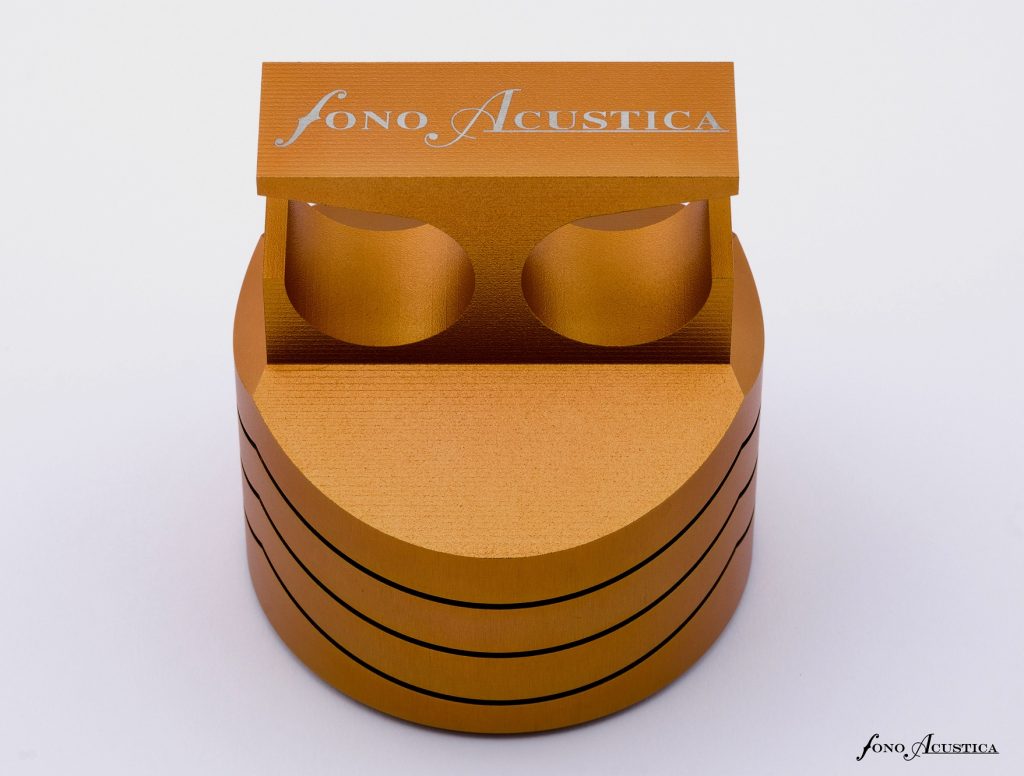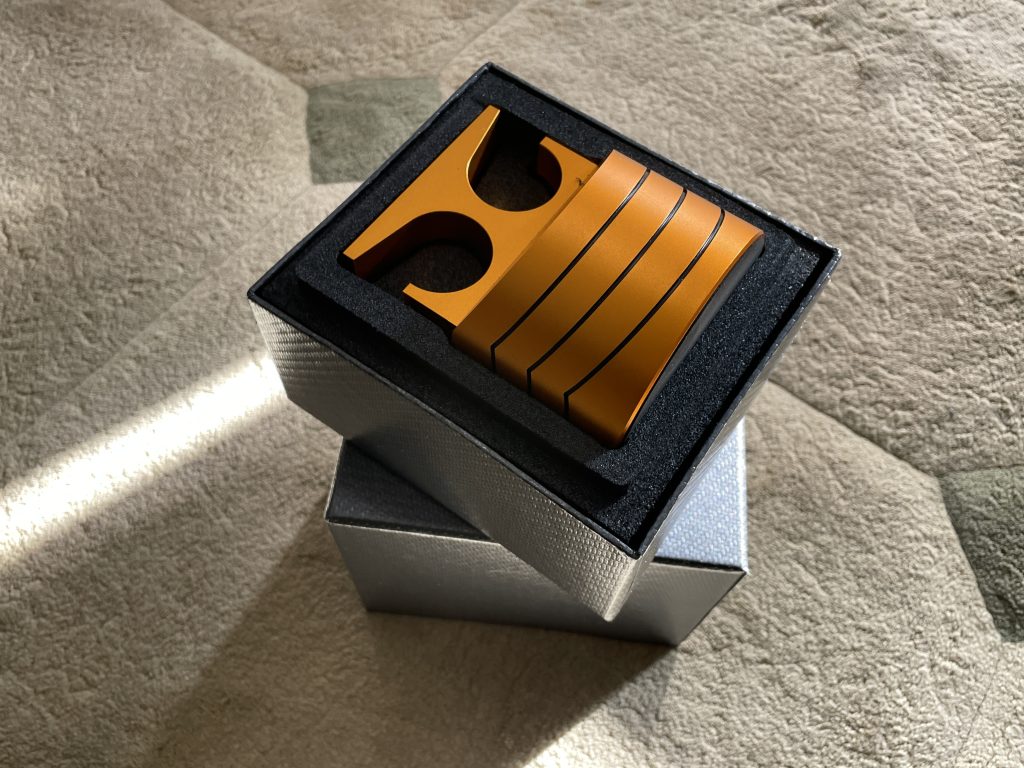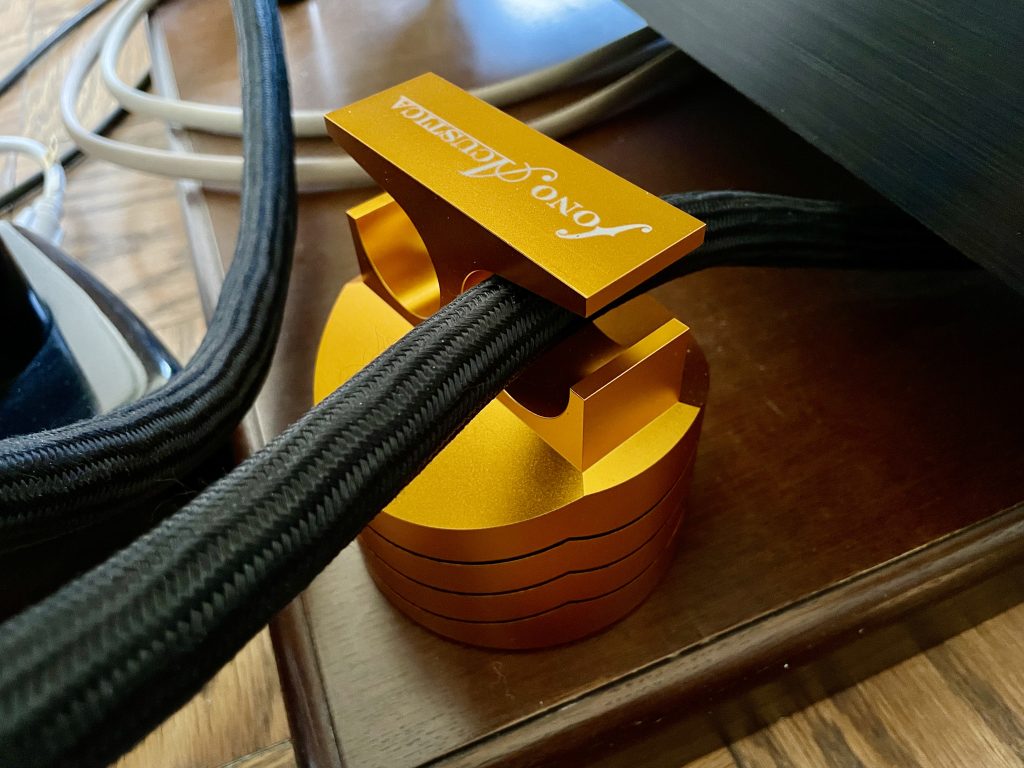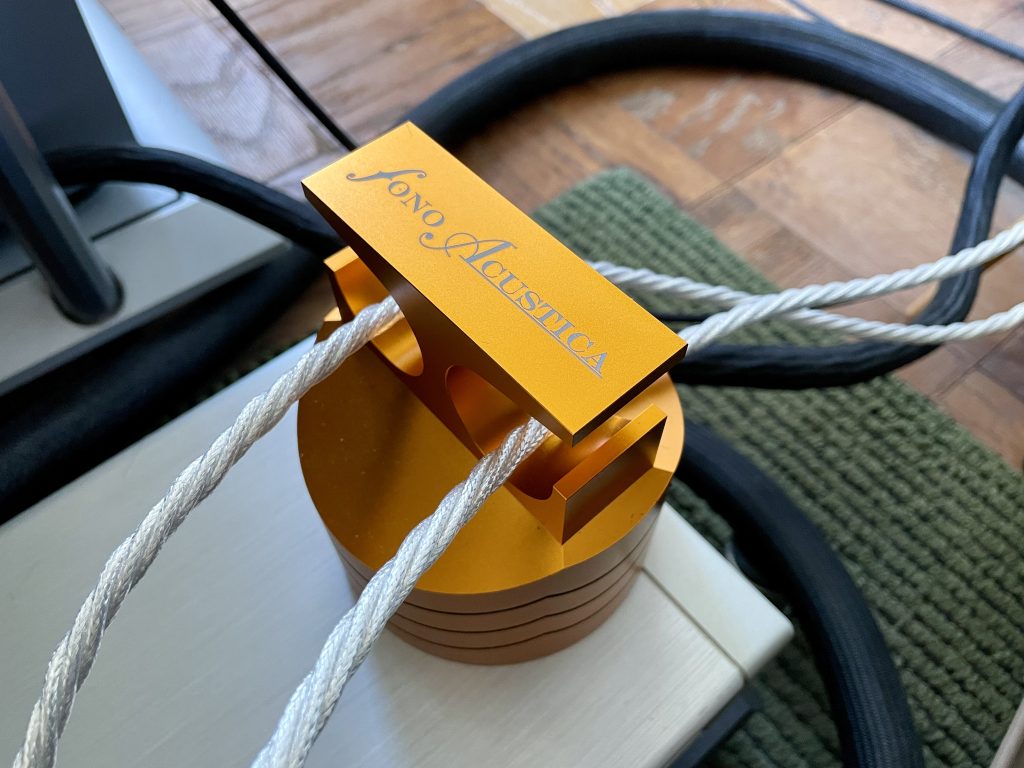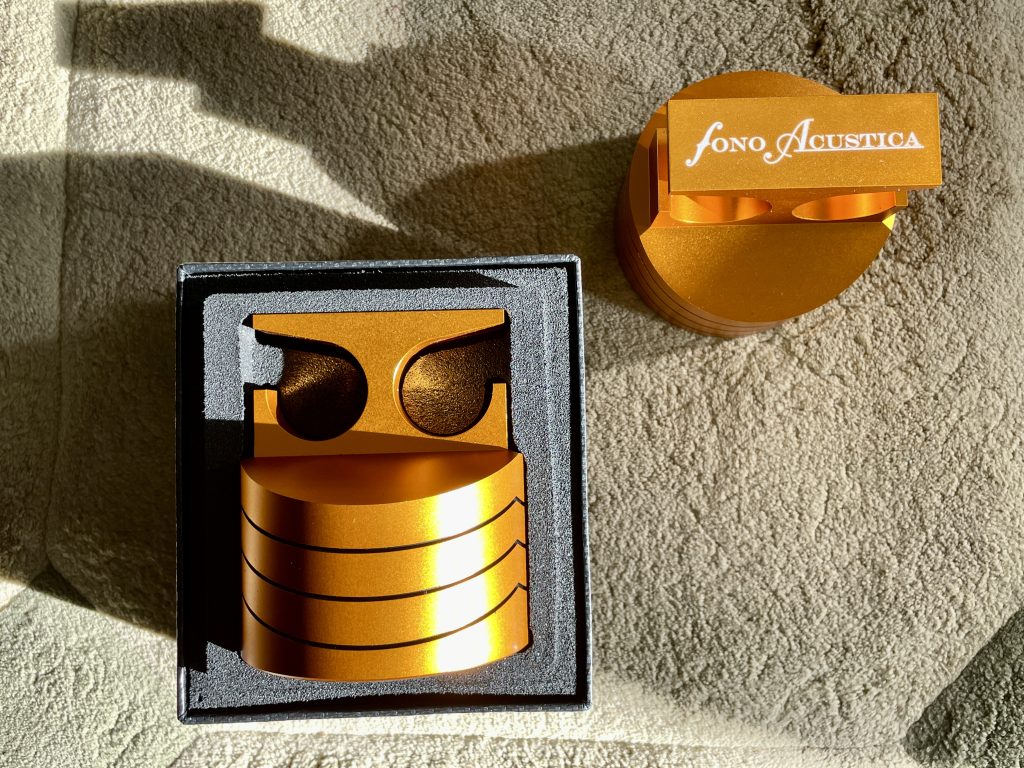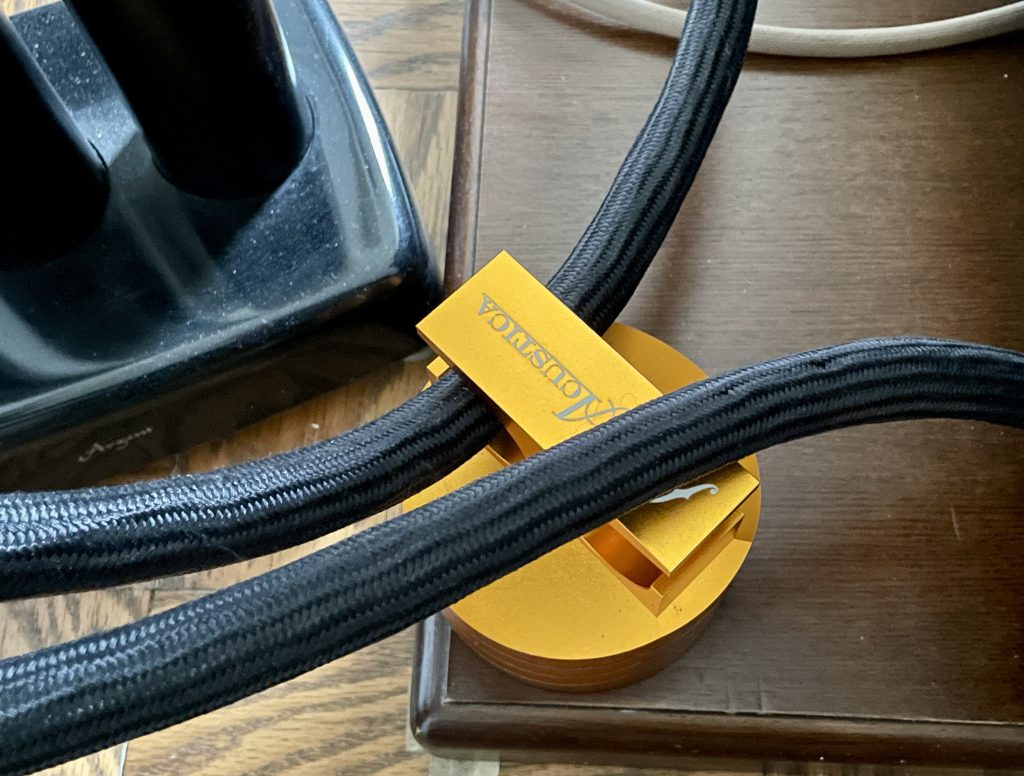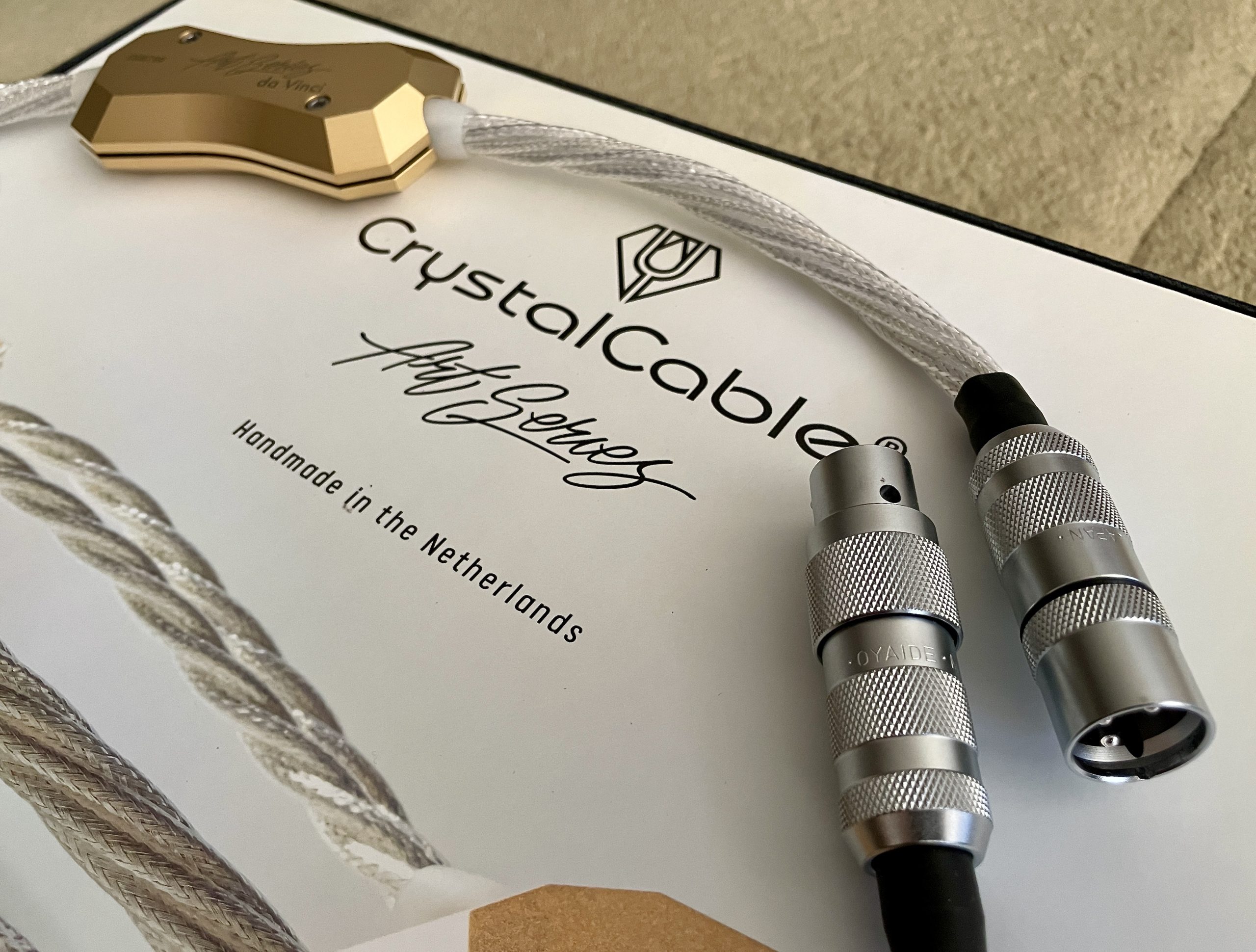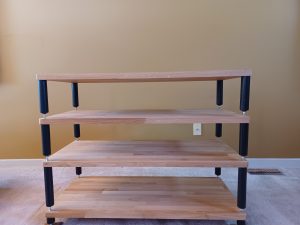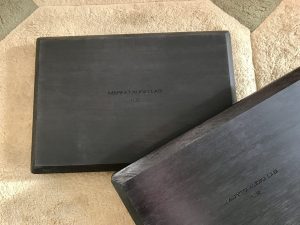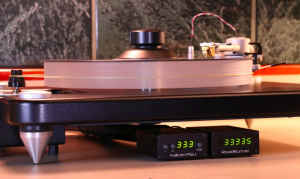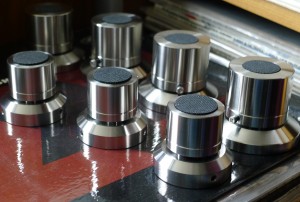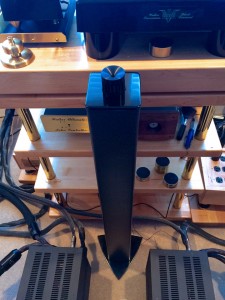There's no getting around it, cable lifts are controversial. With so many competing designs and theories all claiming to remediate the same issues—mechanical vibrations, interactions between wires, and RFI/EMI contamination—sorting them out can make your head spin. One company says the best RFI solution is lifting the cable with a minimum of mass, coming close to the vacuum dielectric used in some of the world's best cables (the AudioQuest Fog Lifter). Another approach targets mechanical vibrations with heavy stands or clamps (the Furutech NCF Booster).
Tone vs. Definition
Which of these theories are true? Better yet, which products are effective? The truth is they all have an impact, albeit in different ways. I have samples of each in my spice rack along with half a dozen others, and use them to season the system with whatever it needs at the time. The massive stands tend to act like body builders, enhancing tone, adding weight and density. The minimum mass ones substantially ratchet up definition, boost transparency, and usually thin the sound. The perfect cable lift would be an amalgam of body builder and minimum mass, plus it would be height adjustable. None exist. (Judging by appearance alone, the Shunyata Research DF-SS comes pretty close.)
I neglected to mention a third, outlier group. While the majority of cable lifts make claims to neutrality—just hoist the cable and be done with it—a small contingent incorporates sound enhancement elements. Examples include: the Furutech Booster with its NCF nanoparticles; the Ansuz Darkz Cable Lifter; and the Acoustic Revive RCI-3 HK Cable insulator. The FAL-2 Cable Lift from Fono Acustica belongs to this group.
FAL-2 cable lift Cosmetics and Construction
The FAL-2 Cable Lift is obviously built for the purpose, but doesn't look like the others. Oversize and heavy, made from a single block of aluminum, it weighs 1.8kg (3.97 lbs). The wide base is 105mm (4 1/4") in diameter and rises 54mm (about 2"), tapering into a narrower ‘T' shaped bar, where the cables are placed. Overall height is 120mm (5"). It is beautifully machined with a shiny copper metallic finish similar to the terminations on FA's Armónico line of cables. The finish is claimed to be non-conductive to reduce noise. Visually, the FAL-2 does not recede into the woodwork and makes quite a statement. It is also expensive as far as these things go ($695 USD each).
In keeping with FA products in general, there's more than meets the eye. If you tap the top section of the FAL-2 with a pen it emits a pleasant ring, almost like a chime, while a tap on the bottom section yields a dull thud. A chiming top section? That is really unusual—what does that do to the sound?
Felix Avalos, the proprietor of Fono Acustica, emailed with answers but, as is his policy, he didn't give away too much. "Yes, the top ring sound is by design. It gives the cables an air flow style with a solid base, this approach fully isolates the cables from the floor to reach optimum mechanical grounding. Also, note that the sound performance will be different depending on the type of cable placed on it (power cord, speaker, interconnect, etc)." The literature that came with the product made further claims to improvements in imaging, soundstaging, and depth of tone.
I slipped a single FAL-2 under the Audience frontRow Power Cable between the wall and the Audience adeptResponse conditioner for my monoblocks, then put on a new recording of Brahms Symphony No.1, with the Bamberger Symphoniker and conductor Jakub Hrůša. This is the final volume in Hrůša's project to demonstrate the musical affinity between Brahm's and Dvořák's symphonies. IMHO, he succeeds wonderfully: The cycle is among the standout recordings of the last few years, especially for musical interpretation. I highly commend it to your attention.
FAL-2 supporting Audience frontRow Power Cable
Many times when you introduce a product the big picture appears unchanged and you have to look at an underlying level to find differences. Not the case this time. The effects of the FAL-2 were so broad-based and dramatic as to catch me off guard. Right away I noticed increased body and fullness, a little softening of the treble and broadening of the midrange, more resonance, and lingering decays. The manufacturer's claims for soundstaging and dimensionality also panned out; the images were more sculpted in space and certainly had more presence. I was surprised, though perhaps I shouldn't have been, how closely these effects mirrored other FA products, in particular their Armónico interconnects. And, just like when I heard those interconnects for the first time, it was such a departure that I asked myself: Was it overdone; was there too much resonance; were the decays too long? Lynn had no such reservations. I needed time to acclimate.
After the adjustment period, I swapped out the FAL-2 for one of my other cable supports.
Interesting… the surface of the soundstage had a different texture. The tones didn't spread to cover the surface evenly and it was grainy, made of very small dots of tone, pixilated, like a photo that has been enlarged too much. It brought to mind pointillist masterworks by painters like Georges Seurat. (This with more noticeable with CD playback, less so with analog source. Funny how I keep working on my digital, while the analog hasn't been tweaked in a long time and still kills it.)
The FAL-2 eliminated the pixilation in two ways. First, by casting larger images and softening their edge boundaries. Second, by increasing tonal density, especially in the bottom register. This wasn't tight bass. Or, I should clarify, it wasn't overly tight bass—just tight enough to be articulate. If your system could use more bass response the FAL-2 will add bloom and energy down below while not messing up top-end extension.
FAL-2 under other Cable Brands
So far I had been tinkering with a single FAL-2 under the frontRow power cord to the adeptResponse conditioner for my amps. The effects were similar when I rotated it under an AudioQuest Dragon PC on my digital clock, or the Stage III Kraken PCs for my monoblocks, or the Stage III Ckahron interconnects between DAC and Preamp.
FAL-2 and Crystal Cable Van Gogh Speaker Wire
An Example That Didn't Work Out Well
The only placement that didn't pan out was a pair of FAL-2s supporting the Van Gogh Speaker Cable from Crystal Cable. I cued up a CD remastering of Booker Little: Out Front (Candid CCD 79027, recorded in 1961). The FAL-2 did its thing as it had with the other wires—big images, lots of bloom and body, long decays, heavier midrange—but it also became soft and rounded. They were quickly removed.
On the other hand, the FAL-2 transformed an average Red Book CD, like the Grażyna Bacewicz Violin Concerto No. 3 (DUX 0685). You can tell this is a great composition, only the sound quality is average-to-poor. With three FAL-2s deployed—supporting an AQ PC to the digital clock, and both frontRow PCs to the adeptResponse conditioners—the sound advances to merit an E- grade. Definitely a step forward.
Adding some more FAL-2
Two or three FAL-2s were optimal for the whole system, and most beneficial supporting power cords. Can you use more than one on a cable? Sure—trial and error will tell you how many and where, evaluating as you add more or move them around. You'll know when you've gone too far; the top end gets soft and you find yourself less engaged with the music.
A frontRow PC Placed In and Out on Top
Installation
The FAL-2 come without instructions. Their shape suggests placing the cables in the two openings on either side of the top part. I soon found many of my wires wouldn't fit in these openings. It occurred to me to drape them over the crossbeam of the top part. This produced the same result, plus it was much easier to work with.
Conclusion
Given how controversial cable lifts are in our community, it would be understandable if you closed this article after skimming a couple of paragraphs. Had you persevered, it would be understandable if you found what I reported very far out. Well, so did I. The impact of these FAL-2 Cable Lifts from Fono Acustica does not fall in line with the conventional wisdom. Audio is an empirical pursuit; your ears are the arbiter that tells you what's up. Sometimes the best course is to leave the understanding until later (or never) and just give it a shot. All you have to do is listen.
I heard a cluster of changes—increased body and fullness, more resonance, and lingering decays—and couldn't help noting how closely they tracked other FA products, particularly the Armónico interconnects. How does the FAL-2 do these things? I'll go out on a limb and speculate that the top section of the lift is adding a controlled amount of selective resonances.
A lot of products address resonance control—this isn't a brand-new concept. Most aim to cancel them; a few aim to increase them. Adding controlled resonances can be very beneficial, or potentially harmful in two ways: 1) getting in the way of resolution by covering over details; 2) increasing the commonality from disc to disc so everything sounds more alike. I can't say I noticed either of these. There was as much fine detail as before and the varying impressions from recordings confirm differences were coming through.
The FAL-2 made a dramatic, positive impact. I needed a short acclimation period and then never looked back. I might just add a couple to my spice rack.
FAL-2 Cable Lift
Retail: €640 Euro/$695 USD each
Fono Acustica




